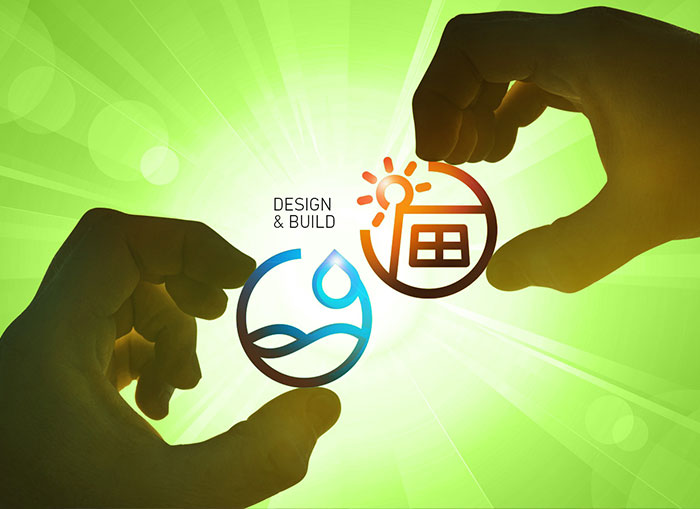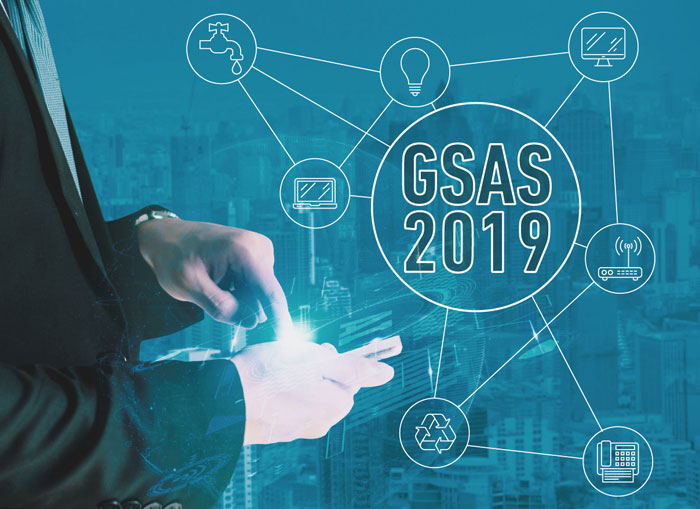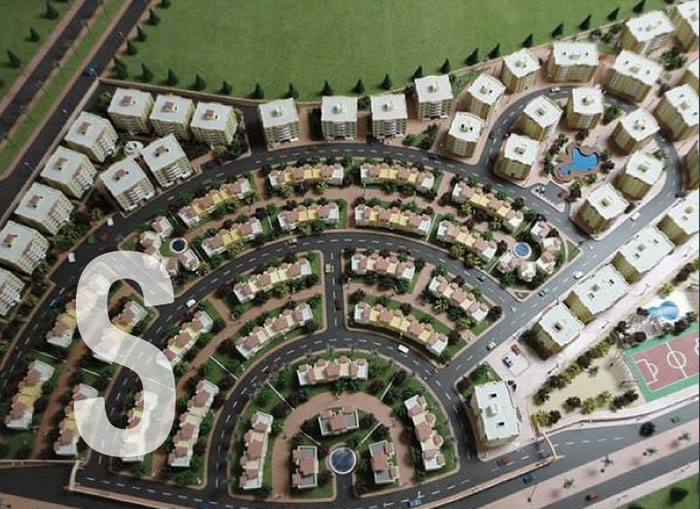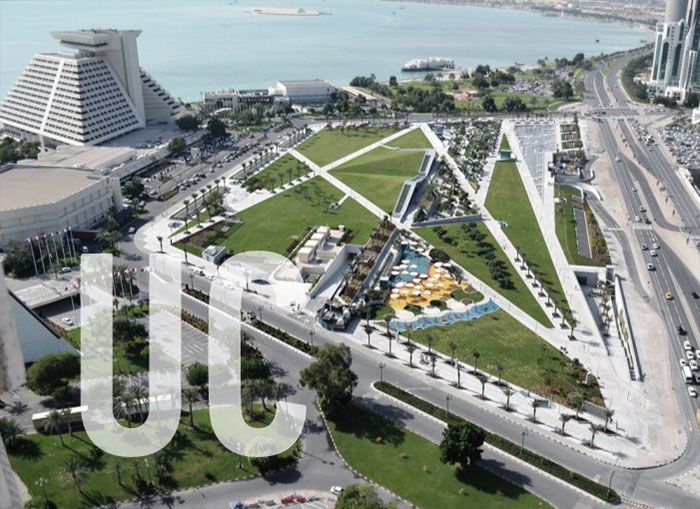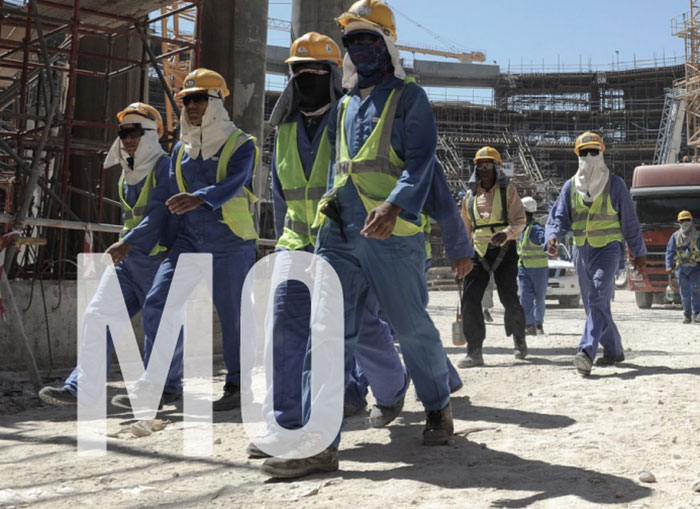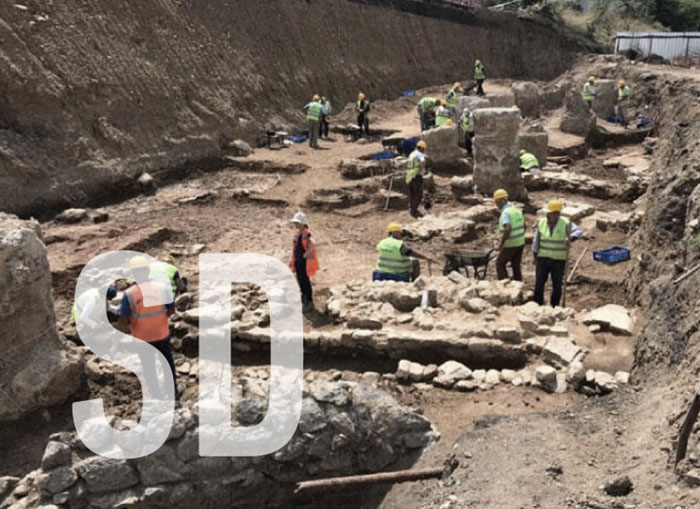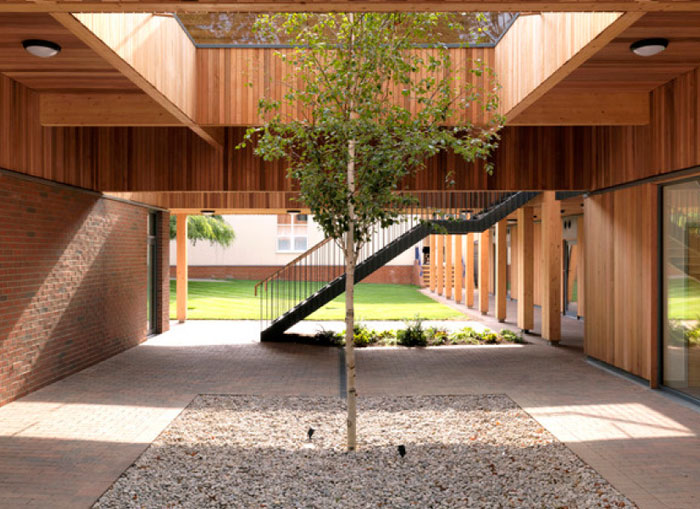Batch - 1
Popular Course
GSAS-CM CGP Course
<p>This course consists of 12 modules covering all detailed info on the requirements for assessing all criteria and describes the protocols and particulars for the evaluation of each criterion, which includes; testing, reports, plans, simulations, calculators, and how to achieve the criterion levels</p>
GSAS-OP CGP Course
<p>Description → This course consists of 11 modules covering all detailed info on the requirements for assessing all criteria and describes the protocols and particulars for the evaluation of each criterion, which includes; testing, reports, plans, simulations, calculators, and how to achieve the criterion levels.</p>
GSAS-D&B CEP Course
<p>This course consists of 16 modules covering all detailed information related to assessing Energy & Water for GSAS Design & Build projects, and describes in details all suites required inputs for a successful submission.</p>
GSAS-CM CEP Course
<p>This course consists of 10 modules covering all detailed information related to assessing Energy & Water for GSAS Construction Management projects, and describes in details all suites required inputs for a successful submission.</p>
GSAS-D&B CGP Refresher Course plus CGP License Renewal Fee
<p>This course consists of 17 modules covering all GSAS-D&B CGP categories and criteria. It provides detailed information on the categories and criteria updates and the protocols of project certification as well as explaining the structure of each criteria.</p>
GSAS-CM CGP Refresher Course
<p>This course consists of 15 modules covering all GSAS-CM CGP categories and criteria. It provides detailed information on the categories and criteria updates and the protocols of project certification as well as explaining the structure of each criteria.</p>
GSAS-OP CGP Refresher Course
<p>This course consists of 12 modules covering all GSAS-OP CGP categories and criteria. It provides detailed information on the categories and criteria updates and the protocols of project certification as well as explaining the structure of each criteria.</p>
GSAS-CM Site
<p>This course consists of 6 modules covering the GSAS Site category and its criteria. Environmental impacts resulting from unsustainable site practices include, land contamination and ecological value deterioration; biodiversity deterioration, water pollution and air pollution. Factors that could mitigate environmental impact include, preserving or enhancing land quality, preserving biodiversity of the site, controlling erosion and prevent off-site sedimentation, minimizing negative impacts of earthworks activities and minimizing negative impacts of dewatering activities.</p>
GSAS-CM Urban Considerations
<p>This course consists of 4 modules covering the GSAS Urban Considerations category and its criteria. Environmental impacts resulting from unsustainable urban practices include, land use & contamination, water pollution, air pollution and human health & comfort. Measures that could mitigate environmental impact include, controlling the impacts of traffic on-site and neighboring sites, preventing any risks or pollution to drain, stormwater and waterbodies and maintaining the water quality of existing waterbodies.</p>
GSAS-CM Energy
<p>This course consists of 5 modules covering the GSAS Energy category and its criteria. Negative impacts resulting from unsustainable energy use include, climate change, fossil fuel depletion, air pollution. Measures that could mitigate environmental impacts due to unsustainable energy use include, selecting efficient materials and systems for temporary buildings, selecting energy efficient construction equipment and machinery and using renewable and/or low-carbon energy sources.</p>
GSAS-CM Water
<p>This course consists of 5 modules covering the GSAS Water category and its criteria. Impacts resulting from unsustainable water consumption include, water depletion, human comfort & health and water pollution and contamination. Measures that could mitigate environmental impacts and lower demand on water include, implementing water conservation practices, selecting efficient water-consuming fixtures, creating a system for collection and reuse and treating water on-site.</p>
GSAS-CM Materials
<p>This course consists of 4 modules covering the GSAS Materials category and its criteria. Environmental impacts resulting from unsustainable material use include, materials depletion, climate change, fossil fuel depletion and air, water and land pollution. Measures that could mitigate environmental impact due to unsustainable use of materials include, diverting existing waste materials from landfill or incineration, using certified products and materials with enhanced environmental, health and resources conservation attributes and minimize transportation and disposal of soil through reuse and optimization of cut and fill balance.</p>
Certified Measurement & Verification Professional (CMVP)
<p>The Certified Measurement & Verification Professional® (CMVP®) Training Program provides attendees an understanding of industry best practices for measurement and verification (M&V), including how to evaluate the performance of efficiency projects, and how to best apply International Measurement and Verification Protocol standards. It prepares attendees to take the CMVP® exam. • Online registration is available until March 20, 2023</p>
Certified Renewable Energy Professional (REP) - May 5 - 7, 2025
<p>AEE’s Certified Renewable Energy Professional™ (REP™) Training Program is designed to provide attendees a deep-dive into alternative energy sources, clean energy technologies, and sustainable energy practices. During this intensive program, candidates get to learn about renewable energy principles and practices of greatest relevance and practical value.</p>
Glazing Fundamentals for Green Buildings - 2 LHs
<p>Glass is an important building element that brings daylight in a space. All-glass buildings are a common scenario in most parts of the world. Extensive use of glass results in excessive light and heat ingress which not desired for a well designed comfortable space. A balance between heat and light gain can be achieved by selecting the right kind of glass in addition to using shading devices and being aware of the window wall ratio used in the project. While all glass might look the same, its specifications have a significant impact on daylighting. When you learn about glass, you have to learn about heat ingress as well in addition to daylight. Awareness of the properties of glass and its technical specifications will help in selecting the right kind of glass for an application.</p>
Primer on Solid Waste Management - 2 LHs
<p>Innovative waste management techniques are empowering cities, companies and communities to reduce their waste footprints. The inspiration comes from nature- where waste becomes a resource, a nutrient and an economic asset. This course introduces you to the fundamentals of waste management, focusing on the best practices to mitigate climate change, pollution and reduce volumes of waste. It further provides clarity on the principles of zero waste, with the help of several examples and case studies. It also highlights the various waste management guidelines covered in Global Sustainability Assessment System (GSAS) Design and Build rating.</p> <p> </p>
Sustainable Landscape Design Strategies - 2 LHs
<p>Often landscape design is correlated with sustainability. Landscapes connect humans directly to natural systems, while providing a setting for different kinds of uses. At the same time, it’s important to ensure that the landscape itself preserve the local ecology, hydrology and biodiversity. For that, landscapes must be viewed as more than just an aesthetic add-on. This course will introduce you to sustainable landscape design and prepare you to distinguish between favorable and unfavorable landscape practices. Further, you’ll learn how these strategies can be leveraged to optimize green building performance. It also highlights the various landscape design strategies covered in Global Sustainability Assessment System (GSAS) Design and Build rating.</p>
Climate Analysis Tools - 2 LHs
<p>Using daylight in buildings is a key strategy for passive design. Efficient daylighting schemes help achieve comfort by offering optimum illumination, excellent colour-rendering; avoiding glare and excessive brightness ratios which has a positive impact on occupant health and well-being. This course will discuss strategies that are necessary to be implemented during conceptual design to integrate the right elements for daylighting. These are simple yet very important elements that need to be decided at the very beginning to steer the design in the right direction. For example, carefully orienting the building for solar access, and controlling the quality and quantity of light as it enters inside a space. Since most of the light that enters buildings is through windows and skylights, comprehending a set of strategies for effective fenestration design would make one’s job easier at the early design stage. These thumb rules do not require many calculations, but it does impact the overall building form, volume and space planning. This course also enumerates many interesting projects that showcase the successful integration of daylight for enhancing the character of a space. The entire lecture is structured into 8 modules with highly visual and engaging content. At the end of the course, you will walk away with the knowledge that you can apply to your work.</p>
Daylight Design Guidelines & Strategies - 2 LHs
<p>Using daylight in buildings is a key strategy for passive design. Efficient daylighting schemes help achieve comfort by offering optimum illumination, excellent colour-rendering; avoiding glare and excessive brightness ratios which has a positive impact on occupant health and well-being. This course will discuss strategies that are necessary to be implemented during conceptual design to integrate the right elements for daylighting. These are simple yet very important elements that need to be decided at the very beginning to steer the design in the right direction. For example, carefully orienting the building for solar access, and controlling the quality and quantity of light as it enters inside a space. Since most of the light that enters buildings is through windows and skylights, comprehending a set of strategies for effective fenestration design would make one’s job easier at the early design stage. These thumb rules do not require many calculations, but it does impact the overall building form, volume and space planning. This course also enumerates many interesting projects that showcase the successful integration of daylight for enhancing the character of a space. The entire lecture is structured into 8 modules with highly visual and engaging content. At the end of the course, you will walk away with the knowledge that you can apply to your work.</p>
Overview of Passive Cooling Strategies - 2 LHs
<p>Passive Solar design strategies help us in designing buildings with better thermal comfort without the use of any mechanical energy sources. This course covers different passive cooling techniques as applicable to buildings designed in the hot climate. To make our buildings sustainable, it is pertinent that we use a minimum amount of mechanical energy to achieve thermal comfort. This is especially challenging in a hot climate where high temperature is prevalent most of the year making it inevitable to use mechanical energy for comfort. High humidity can make the situation even more difficult. Designing buildings that are climate responsive and use as less energy as possible to provide comfort is the way forward. This is is the sustainable approach. Passive solar design principles avoid unwanted heat gain in the building preventing overheating and hence reducing the need for cooling. It is vital to provide cooling with passive techniques that do not use any energy. After having exhausted all the available and applicable strategies, the remaining demand can be met by mechanical space conditioning systems. This approach sharply reduces the cooling demand and the associated energy use over the lifetime of the building. This cannot be achieved without a climate responsive approach. This course will cover many passive cooling techniques as applicable to buildings in hot climate. Most of these techniques rely on natural heat sinks to dissipate the excess heat gained by a building. This course also enumerates many interesting projects that showcase the successful adoption of passive cooling techniques. It will also highlight the passive cooling considerations that are addressed in Global Sustainability Assessment System (GSAS) Design and Build rating. The entire lecture is structured into 6 modules with highly visual and engaging content. At the end of the course, you will have clarity on different techniques and their application.</p>
Anatomy of Net Zero Energy Buildings - 2 LHs
<p>A net-zero energy building or an NZEB is a building which meets its greatly reduced energy demand through renewable sources of energy. In other words, NZEBs have zero dependencies on fossil fuels. In terms of specific metrics, there are several ways to define an NZEB such as Site-NZEB, source-NZEB, Cost-NZEB and Emissions-NZEB. A project may choose to define its NZEB based on the goals set by the team. Meeting NZEB goals is a key strategy for the building sector to mitigate its impacts on climate change and global warming. This course will give you an in-depth understanding of the different definitions of NZEBs and the different steps involved in achieving NZEB goals. Detailed examples of NZEBs from the world over will further reinforce your understanding of the concept. Finally, you’ll understand the different roadmaps that governments and international bodies are laying out to promote NZEBs. The comprehensive course content is organized into seven modules engaging you in a learning experience that’s fun and insightful at the same time. The course will also highlight the various NZEB criteria that are addressed in the Global Sustainability Assessment System (GSAS) Design and Build rating. GSAS Design and Build rating emphasizes a lot on designing NZEB buildings and evaluates them through various operation and maintenance criteria.</p>
Renewable Energy Technologies - 2 LHs
This course looks at a cross section of 10 renewable technologies, future potential, and policies driving the uptake of renewable energy across the world. This course does a 360 degrees appraisal of 10 different renewable energy technologies- diving into design requirements, applications, challenges, and zooms out to assess their global potential. Renewable energy has grown to 10.4% of the global energy mix with solar photovoltaic and wind emerging as the most preferred new energy installation types. Anybody keen on gaining a comprehensive overview of renewable energy in the global context will find this course informative and insightful. At the end of the course, you will be able to recognize different renewable energy installations, their design criteria as well as challenges involved. You will be able to critically examine policy measures supporting the rapid transition to renewable energy across the world. It will also highlight the renewable energy guidelines specified in Global Sustainability Assessment System (GSAS) Design and Build rating.
Certified Energy Manager (CEM) - February 17-20, 2025
<p>The Certified Energy Manager (CEM®) accreditation is one of the most respected in the field of energy management with international recognition from the Association of Energy Engineers (AEE). CEM training program provides in-depth knowledge of principles, practices and technologies needed to enhance the energy performance of buildings. After completing this preparatory training, attendees are required to pass a proctored exam to be eligible to receive the CEM certification.</p>
GSAS-D&B Site
<p>This course consists of 16 modules covering the GSAS Site category and its criteria. Sustainable landscaping and site design practices can improve the quality of the existing site and landscape and minimize impacts on the surrounding environment including: climate change, fossil fuel depletion, water depletion and pollution, air pollution, land use and contamination, and human comfort and health.</p>
GSAS-D&B Energy
<p>This course consists of 7 modules covering the GSAS Energy category and its criteria. Sustainable energy design helps to mitigate such impacts and contributes to a less energy intensive economy and a more sustainable environment. There are multiple elements and factors which impact the total building energy consumption. They range from building envelope elements to HVAC system components. None of these factors can be looked at in isolation; only the calculation of the overall outcome will show the effectiveness of the design.</p>
GSAS-D&B Water
<p>This course consists of 5 modules covering the GSAS Water category and its criteria. The natural water cycle is a system in which water resources are continuously exchanged between the atmosphere, soil water, surface water, ground water, and plants.</p> <p>This cycle treats and recharges freshwater supplies. Human consumption of fresh water outpaces the natural cycle and under these circumstances, water cannot be considered as a renewable resource.</p> <p>Sustainable practices for the efficient use of water, the collection, recycling and reuse of water to mitigate environmental impacts associated with water scarcity and depletion.</p>
GSAS-D&B Materials
<p>This course consists of 8 modules covering the GSAS Materials category and its criteria. The construction sector has a significant impact on the environment. It accounts for the consumption of approximately 40% of the raw stone, gravel, and sand used worldwide annually, 25% of the raw timber and the associated embodied carbon emissions for such materials. Eco-friendly construction materials can contribute to reduce the adverse impacts on the environment, and create sustainable buildings promoting the health and well-being of occupants.</p>
GSAS-D&B Cultural & Economic Value
<p>This course consists of 3 modules covering the GSAS Culture & Economic Value category and its criteria.</p> <p>The architecture of the built environment can contribute towards the preservation of local cultural identity and heritage. Design expression should align with and integrate the development into the existing cultural fabric.</p> <p>In addition, the use of local materials and local workforce contributes towards the growth of the national economy.</p>
Accredited Energy Practitioner (AEP) - May 14-15, 2025
<p>As a part of our capacity building, knowledge dissemination and outreach program, GORD in collaboration with Kahramaa/Tarsheed is pleased to introduce the “Accredited Energy Practitioner - AEP” certification-based training program. This initiative is tailored to empower energy professionals with the knowledge and certification necessary to conduct energy audits for existing buildings during their operational phase. Structured to cover a wide learning spectrum, the workshop will start with basic introduction followed by in-depth content on energy audits which can support obtaining sustainability rating. Recognizing the direct relevance of the AEP Program to your organization, we invite you to participate in our upcoming AEP training workshop followed by the exam.</p>
GSAS-CM Outdoor Environment
<p>This course consists of 5 modules covering the GSAS Energy category and its criteria. Negative impacts resulting from unsustainable energy use include, climate change, fossil fuel depletion, air pollution. Measures that could mitigate environmental impacts due to unsustainable energy use include, selecting efficient materials and systems for temporary buildings, selecting energy efficient construction equipment and machinery and using renewable and/or low-carbon energy sources.</p>
GSAS-D&B CGP Course
<p>This course consists of 12 modules covering all detailed information on the requirements for assessing all criteria and describes the protocols and particulars for the evaluation of each criterion, which includes; testing, reports, plans, simulations, calculators, and how to achieve the criterion levels.</p>
GSAS-D&B Urban Connectivity
<p>This course consists of 7 modules covering the GSAS Urban Connectivity category and its criteria. Sustainable urban practices improve the development of neighborhoods and communities, in addition to minimizing the impacts on the surrounding environment including; climate change, fossil fuel depletion, water depletion and pollution, air pollution, land use and contamination, and human comfort and health.</p>
GSAS-CM Management & Operations
<p>This course consists of 5 modules covering the GSAS Energy category and its criteria. Negative impacts resulting from unsustainable energy use include, climate change, fossil fuel depletion, air pollution. Measures that could mitigate environmental impacts due to unsustainable energy use include, selecting efficient materials and systems for temporary buildings, selecting energy efficient construction equipment and machinery and using renewable and/or low-carbon energy sources.</p>
GSAS-CM Socio-Cultural Dimensions
<p>This course consists of 3 modules covering the GSAS Socio-Cultural Dimensions category and its criteria. Impacts resulting from the non-protection of archeological remains or heritage sites, and ineffective control and design of the Socio-Cultural Interactions include, loss of cultural heritage, loss of society wellbeing, missed opportunities to build mutual trust between society and the needs of construction practices. Factors that could mitigate the impact include, identifying archeological sites to prevent damage by excavation, identifying heritage items or relics for protection against site activities and implementing an effective control and design of Socio-Cultural Interactions.</p>
Fundamentals of Passive Design - 2 LHs
<p>Buildings consume a significant amount of energy throughout their operational life. Climate responsive design should be the way forward to reduce building energy demand and lower greenhouse gas emissions. This course covers all the passive design principles fundamental to designing climate-responsive buildings. It can be considered a refresher course to brush up on the basics.</p>
GSAS-D&B CGP (Face to Face Workshop)
<p>GSAS Design & Build CGP Workshop covers all detailed information on the requirements for assessing all criteria and describes the protocols and particulars for the evaluation of each criterion, which includes; testing, reports, plans, simulations, calculators, and how to achieve the criterion levels. It aims to provide guidance and instructions on the assessment approach established by GSAS Trust to meet GSAS Design & Build certification requirements.</p>
GSAS-CM CGP (Face to Face Workshop)
<p>GSAS Construction Management CGP Workshop covers all detailed information on the requirements for assessing all criteria and describes the protocols and particulars for the evaluation of each criterion, which includes; testing, reports, plans, simulations, calculators, and how to achieve the criterion levels. It aims to provide guidance and instructions on the assessment approach established by GSAS Trust to meet GSAS Construction Management certification requirements</p>
GSAS-OP CGP (Face to Face Workshop)
<p>GSAS Operations CGP Workshop covers all detailed information on the requirements for assessing all criteria and describes the protocols and particulars for the evaluation of each criterion, which includes; testing, reports, plans, simulations, calculators, and how to achieve the criterion levels. It aims to provide guidance and instructions on the assessment approach established by GSAS Trust to meet GSAS Operations certification requirements.</p>
ESG Leadership Certification - September 24 -25, 2025
<p>With increasing regulatory demands for ESG disclosures, companies face a critical talent gap. The ESG Practitioner program offers a comprehensive understanding of ESG Reporting, ESG Rating, GHG Management, Climate Risk, Sustainable Finance and other relevant sustainability skills. It equips participants with knowledge of ESG standards, frameworks and execution strategies to bridge that gap. The training is grounded in practical knowledge and will be delivered by seasoned ESG Professionals. Upon completion, participants will receive a recognized certification, demonstrating their expertise in this rapidly growing field.</p>
Accredited Energy Practitioner (AEP) - September 3-4, 2025
<p>As a part of our capacity building, knowledge dissemination and outreach program, GORD in collaboration with Kahramaa/Tarsheed is pleased to introduce the “Accredited Energy Practitioner - AEP” certification-based training program. This initiative is tailored to empower energy professionals with the knowledge and certification necessary to conduct energy audits for existing buildings during their operational phase. Structured to cover a wide learning spectrum, the workshop will start with basic introduction followed by in-depth content on energy audits which can support obtaining sustainability rating. Recognizing the direct relevance of the AEP Program to your organization, we invite you to participate in our upcoming AEP training workshop followed by the exam.</p>


